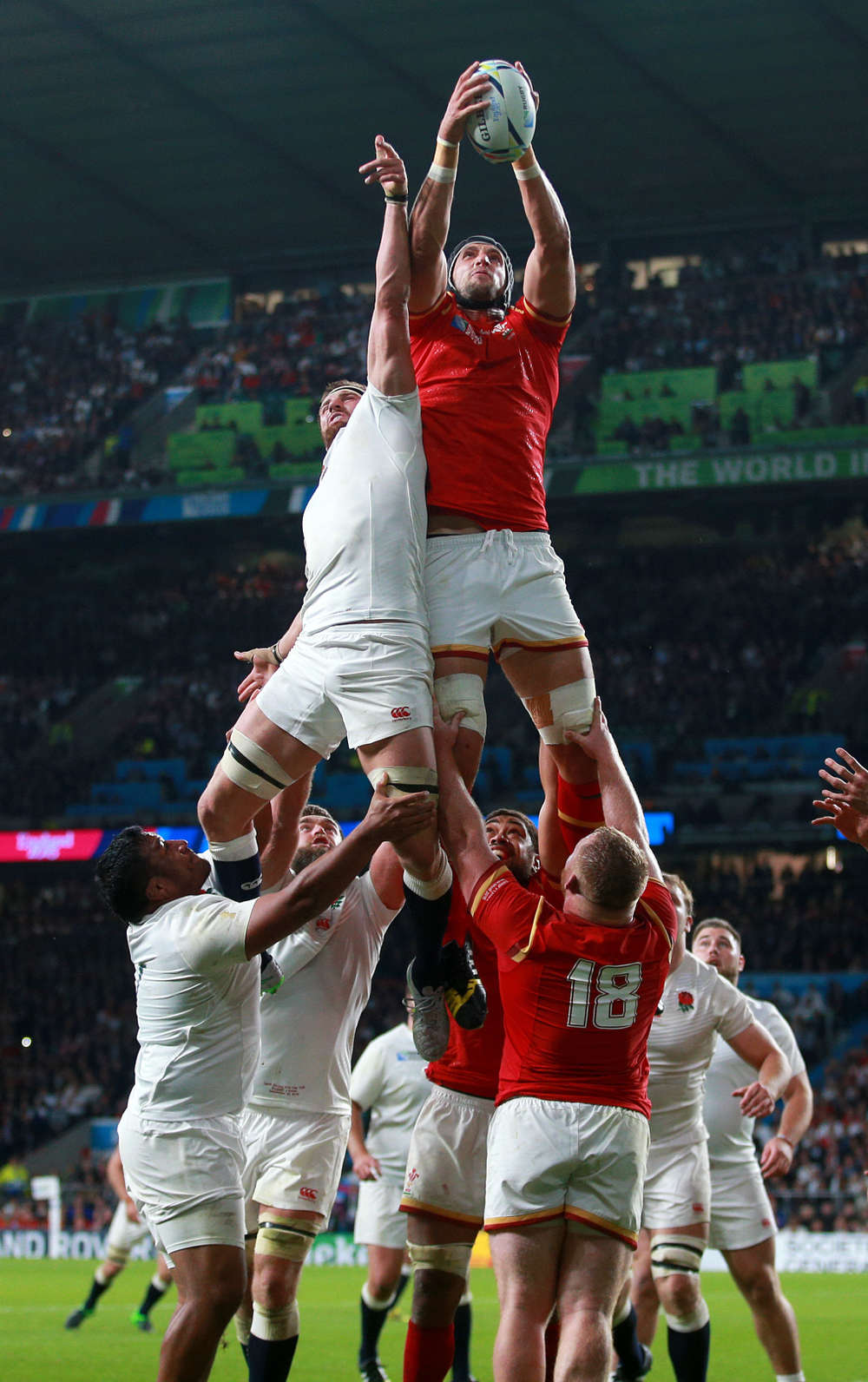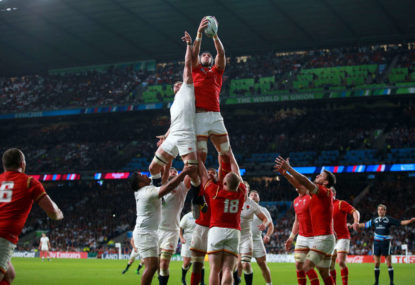The point about rugby that gives it such an edge as a spectacle is that there is so much unpredictability about every play and every match.
As Ireland showed last year at Soldier Field in Chicago, the All Blacks in one of their greatest eras can be smashed and bustled into defeat.
Then last weekend, Scotland who have only won once in the opening round of a Six Nations tournament defeated Ireland, in the opening Test of the 2017 Six Nations tournament.
As for every play, I once asked a statistician about the possibilities of what might happen from any given lineout. He told me that that the possibilities are so many that they can’t really be calculated.
With 15 players on each side, a referee, assistant-referees running the sidelines, a TMO, a law book that is jesuitical in its refinements about what is allowable and not allowable in play (think about the head-high tackle law) you have a game that scientists would describe as “chaotic.”
Take into account, too, that rugby uses an oval ball that rolls, leaps and bounces erratically like a skittish puppy. And, unless the stadium is enclosed, there are weather factors to contend with.
These elements all enhance the chaos already inherent in the game. Wales, for instance, found that their expansive game plan had to modified somewhat when rain fell shortly before their Test with Italy at Rome began.
What all this means is that the best sides are forever condemned to try to enforce some order or pattern on a game whose chaotic element tend to resist having pattern or order imposed on it.
It can be done, of course. The best teams can impose themselves on their opposition. Coaches can produce winning game plans, with the best coaches doing this on a regular basis.
But none of this is truly predictable before play starts.
We got a useful insight into this truth with the predictions made about the first round of the 2017 Six Nations tournament by the staff of QBE, a company that predicts catastrophes.
The Guardian’s Breakdown column reporting on these predictions noted that QBE “simulated the tournament 10,000 times in the company’s model to produce outcomes from 150,000 matches … The computer was fed a number variables, including the points scored by teams in recent matches, broken down into tries and kicks, the caps of each captain, their current world rankings and whether they are playing at home or away.”
It all sound pretty thorough. But how accurate were the predictions?
Here are the results of the first round of the 2017 Six Nations tournament, with the home side named first: Scotland 27 – Ireland 22, England 19 – France 16, Italy 7 – Wales 33.
And here are the results as predicted by QBE: Scotland 17 – Ireland 24, England 29 – France 15, Italy 16 – Wales 33.
Italy performed strongly in a first half which ended with them in front 7-3, before Wales overwhelmed in the second half. Wales ended up with the points tally the QBE predicted, though. And Italy fell short, although it was ill-discipline and tiredness that frustrated some excellent attacking play in the second half.
I would give a tick to QBE for their prediction about this match.
The intriguing aspect about the QBE prediction, however, is that Wales got their decisive scores when their selected outside half, Dan Biggar had to be substituted in the second half by the precociously talented Sam Davies.
Davies was so dominant in setting up the Welsh attacks and making breaks himself that some experts thought he should have been Man of the Match, even though he played for only 40 minutes.
When I saw Davies cutting his capers and setting up his runners with deft passes and great vision I thought about Max Boyce and his song about the ‘Outside Half Factory’.
I always think that Wales are at their best when they field one of these impish geniuses from the ‘Outside Half Factory’, taunting, teasing the opposition, gliding through gaps, scuttling past the out-stretched arms of massive backs, jinking and creating havoc with the opposition’s defensive walls in the manner of Barry John or Phil Bennett.
Sam Davies has the pedigree. His father was a back in the John/Bennett tradition. He told The Guardian: “I see elements of my own game which was based on distribution and creating space and opportunities and Sam has got that.”
Have the Wales coaching staff got the nous to select Davies as a starter against England, even if Biggar is available?

With the running talent that Wales has in the backs, from the halfback out through to the fullback it would be madness – and a rejection of a great Welsh tradition – if the selectors played for safety (and a defeat, in my view) by selecting the pedestrian Biggar ahead of the flair of Davies.
England were well off their game against France. You had the feeling that if it had been an away Test, England would have lost it.
As it was, the Test looked to be gone for England until the reserves came on and turned on a tour de force display of running and power.
Eddie Jones made the obvious point that the best thing about the Test for England was the result. If England is to over take the All Blacks winning run of Tests, then they will have to lift significantly at Cardiff’s Millennium Stadium.
I ambivalent about Eddie Jones’ England. Their record matches the RWC-winning side coached by Clive Woodward. But player for player there is not much comparison between the absolute class of the Woodward side compared with the journeymen status of most of Jones’ team.
I thought England played like a team going through its patterns expecting France to cave in. This did happen in the end but a more mature French side would have established a big and unassailable lead in the first half when they were so dominant in every aspect of the play.
There was no zest or cleverness about England’s play, until the reserves came on towards the end.
The other thing that struck me – and it applied to all the halves – was the really slow delivery of the ball from the ruck, through the halfback and on to the backs.
Most of the teams, too, with the exception of Scotland, tended to bang the ball up in one-off charges rather like a league team playing in a one-off championship match.
As I noted, the exception to this predictable play was Scotland, the only side toplay consistently with some width and some trickery. Scotland scored a terrific set-piece try from a five-metre lineout in a play that I haven’t seen before and which, clearly, the Ireland pack, had never been trained to defend against.
Good coaches always try to bring an unexpected play in for each Test. Often their team doesn’t get the chance to pull off the trick play. Scotland’s play, though, was perfectly executed and constructed.

The QBE prediction was clearly a long way off regarding the outcome of this Test.
The prediction gave Scotland only a 29 per cent chance of defeating Ireland. Although the prediction suggested that there would only be a converted try in the final result in favour of Ireland, Scotland were really much better than their 5-point margin of victory.
There were two New Zealanders coaching the sides, Vern Cotter with Scotland and Joe Schmidt with Ireland.
Cotter clearly out-coached Schmidt. Scotland, admittedly playing at home, had more sting in their defence and attack than Ireland did. They also had far more variety and width in their attack. They posed more questions to Ireland’s defence than Ireland’s attack did to Scotland’s defence.
On the evidence of this Test, you would have to think that Cotter might have more to offer the NZRU when Steve Hansen steps down as the All Black’s coach after the RWC 2019 tournament. His style of coaching an all-court game is more in line with the All Blacks style than Schmidt’s precise, no-risk, hitting from the baseline type of play.
Ireland play Italy at Rome in the first Test of the second round. You would think that Schmidt would get Ireland playing more expansively for this match, and in the succeeding matches in the tournament.
Last season was brilliant for Ireland and Schmidt. They achieved their first victory over the All Blacks in 111 years. They also defeated the other southern hemisphere giants, the Wallabies and the Springboks.
Before the Test against Scotland, Schmidt pushed back against the pundits who predicted that Ireland were the favourites to win the 2017 Six Nations tournament:
“I’m not saying that the pundits do not get it right sometimes, but things turn up. That is why people love sports – you don’t know what the outcome is going to be and part of the fun is predicting it. We try to go for less prediction and more preparation.”
When pushed for his prediction, Schmidt suggested that England should be the favourites and would be “very hard to beat.”
For what it is worth – and giving a sort of insight into the three Six Nations Tests this weekend – the QBE predicted a 64 per cent chance of no one winning a Grand Slam this year, with England having a 21 per cent chance, Ireland 10 per cent and Wales on 3 per cent.
Italy play Ireland in Rome, Wales play England in Cardiff in the match of the round and France play Scotland which will be a test of whether Scotland is, finally, a contender for the title.
For those who are still brave enough to make predictions, fearless rather than fearful, here is how the the QBE forecast predicted the outcome of the 2017 Six Nations tournament. England has 54 per cent of winning, Ireland has 26 per cent, Wales has 12 per cent, France 6 per cent, Scotland 2 per cent and Italy 0 per cent.
This presumes wins in the second round to Ireland, England and France.
My fearful prediction is that at least one of these QBE predictions is wrong. If Wales can play to their potential, two of the predictions will turn out not to be correct.































































































